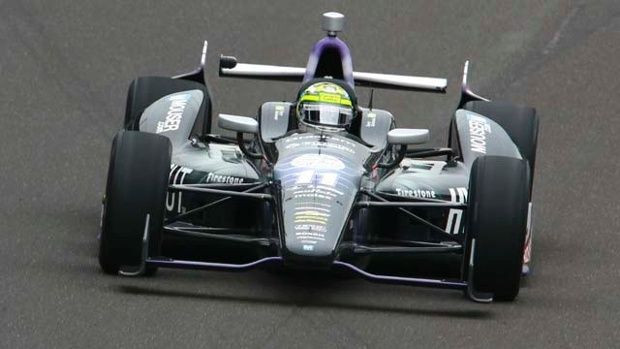Is Ethanol Fuel Making Indy 500 Cars 'Greener'? Fuel Chemist Touts Cleaner Emissions

Car racing is fueled by chemistry -- and the future of race car fuel is looking greener all the time, some chemists say.
The race cars in the Indianapolis 500 first started using ethanol blends in 2006, with a fuel that contained 10 percent ethanol. Previously, the cars ran on pure methanol, a natural gas derivative that is less likely to burst into flames than regular gasoline. And in recent years, the trend has been adding more and more ethanol. This year, Indy 500 cars will run on a mixture of 85 percent ethanol.
Indresh Mathur, the director of research and development at Haltermann Solutions, a Texas-based company that creates custom blends of fuel for aviation, aerospace, marine craft and car racing, touted the environmental advantages of ethanol at the annual meeting of the American Chemical Society, held this year in Indianapolis.
"Fueled with mostly ethanol, these race cars burn more fuel cleanly and release mainly carbon dioxide and water vapor into the air," Mathur said in a statement. "Even without the catalytic mufflers, there are much lower emissions of air pollutants that can have adverse effects on human health and promote the formation of smog."
While ethanol gets worse fuel mileage than other types of fuel, it can result in lower emissions throughout its lifecycle than gasoline -- though that depends on how the fuel is made.
“The best ethanol can have lower lifecycle global warming pollution than gasoline,” says the Union of Concerned Scientists. “But the worst ethanol can significantly increase lifecycle global warming pollution compared to gasoline.”
But gauging the environmental impacts of ethanol is a complex equation to solve. Ethanol is made from a fermented sugar solution usually derived from plant material, often corn kernels. “Cellulosic” ethanol is made from other sources like wood, grass or agricultural waste. Some skeptics say that the energy costs of corn production or the indirect costs of giving farmland over to non-food crops for cellulosic ethanol production outweigh the supposed benefits of ethanol fuel.
French race car driver Stephan Gregoire was also on hand to talk with reporters at the ACS Meeting. Racing, he said, is not just a matter of putting the pedal to the metal: It’s a mixture of chemistry, engineering and human elements. A race car is undergoing constant adjustments before and even during a race, and good communication between the driver and the pit crew is essential, he says.
“People think all you have to do is go fast … but that’s actually not quite true,” Gregoire said at a press conference.
Environmental issues are going to become more important in racing; drivers, racing enthusiasts and owners alike are “looking at solutions to make [the] car more efficient,” he says.
In the coming years, the racetrack may reemerge as a place to develop technology for passenger cars. But the real green future of car racing may lie in switching to even more alternative forms of fuel. Purists might scoff, but Gregoire doesn’t think it’s a pipe dream.
“I think we’ll see electric cars in Formula One,” he said.
© Copyright IBTimes 2024. All rights reserved.











